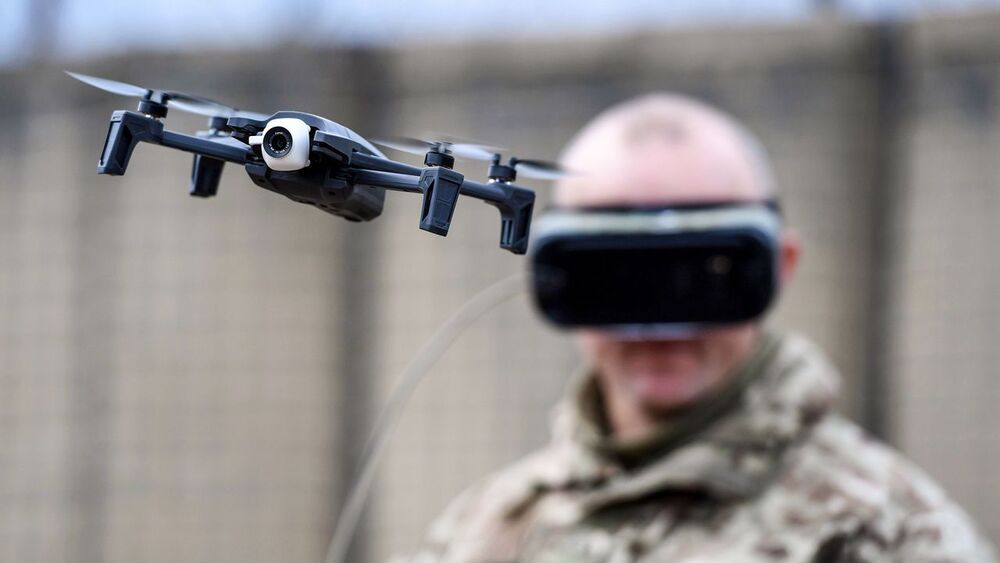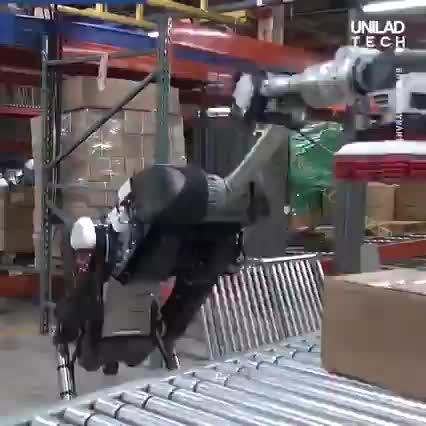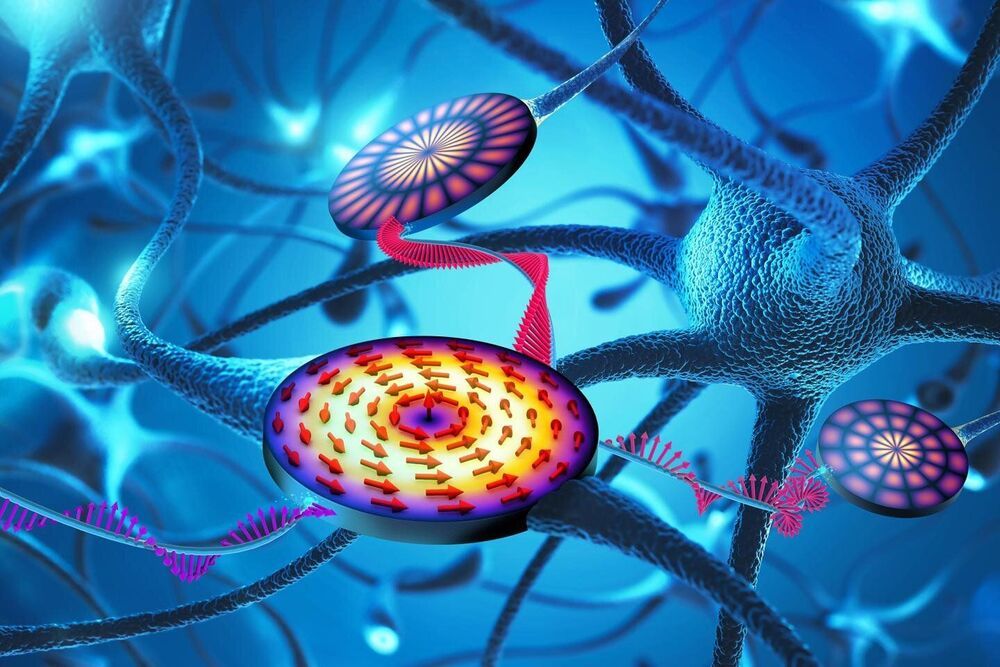Leveraging structure in data is key to making progress in AI, says AI prodigy Gary Marcus. A forward-looking view on Software 2.0, AI chips, robotics, and the future of AI.



Today we are going to discuss the topic drug enforcement from a very interesting technological angle.
Brian Drake, is the Director of Artificial Intelligence for the Defense Intelligence Agency’s (DIA) Directorate of Science and Technology. Mr. Drake works with the DIA’s Future Capabilities and Innovation Office, and he also leads an initiative to test the effectiveness of different applications of artificial intelligence at solving various mission problems, including using AI to combat the opioid crisis with a DIA program known as SABLE SPEAR.
Previous to this role Brian was a Senior Intelligence Analyst and Branch Chief in the DIA’s Americas and Transregional Threats Center (ATTC) and prior to joining ATTC, Mr. Drake was a Management Analyst with DIA’s Chief of Staff.
For DIA’s intelligence analysis mission, he has worked worldwide targets in narcotics, emerging and disruptive technologies, and weapons of mass destruction.
Mr. Drake was stationed in the Pentagon as an Intelligence Briefer in the Executive Support Office, served on the Information Review Task Force, and has led several interagency technical and counterterrorism intelligence teams.
Prior to his time in DIA, Mr. Drake was a management consultant at Deloitte and Toffler Associates where he served commercial clients in various industries and government clients at the ODNI, FBI, CIA, NSA, and the US State Department.

Future EDF research topics will be specified in annual calls run by the European Commission, the EU executive branch, and approved by a committee of national delegates. AI will be a big topic, Ripoche says. He says EDF funding will also go to new materials, such as discreet metamaterial antennas that can be engineered into the surfaces of vehicles and weapons. Muravska says she expects “a healthy take-up” in the EDF by European academic researchers, “provided they are aware of it.”
With no military of its own, European Union funds work on camouflage, drones, and laser weapons.

So Boston Dynamics has possibly created the robo warehouse worker of the future. 🙂
Boston Dynamics’ Handle could be the warehouse worker of the future 🤖 📦.

Neural networks are some of the most important tools in artificial intelligence (AI): they mimic the operation of the human brain and can reliably recognize texts, language and images, to name but a few. So far, they run on traditional processors in the form of adaptive software, but experts are working on an alternative concept, the ‘neuromorphic computer.’ In this case, the brain’s switching points—the neurons—are not simulated by software but reconstructed in hardware components. A team of researchers at the Helmholtz-Zentrum Dresden-Rossendorf (HZDR) has now demonstrated a new approach to such hardware—targeted magnetic waves that are generated and divided in micrometer-sized wafers. Looking to the future, this could mean that optimization tasks and pattern recognition could be completed faster and more energy efficiently. The researchers have presented their results in the journal Physical Review Letters.
The team based its investigations on a tiny disc of the magnetic material iron nickel, with a diameter just a few micrometers wide. A gold ring is placed around this disc: When an alternating current in the gigahertz range flows through it, it emits microwaves that excite so-called spin waves in the disc. “The electrons in the iron nickel exhibit a spin, a sort of whirling on the spot rather like a spinning top,” Helmut Schultheiß, head of the Emmy Noether Group “Magnonics” at HZDR, explains. “We use the microwave impulses to throw the electron top slightly off course.” The electrons then pass on this disturbance to their respective neighbors—which causes a spin wave to shoot through the material. Information can be transported highly efficiently in this way without having to move the electrons themselves, which is what occurs in today’s computer chips.
Back in 2019, the Schultheiß group discovered something remarkable: under certain circumstances, the spin wave generated in the magnetic vortex can be split into two waves, each with a reduced frequency. “So-called non-linear effects are responsible for this,” explains Schultheiß’s colleague Lukas Körber. “They are only activated when the irradiated microwave power crosses a certain threshold.” Such behavior suggests spin waves as promising candidates for artificial neurons because there is an amazing parallel with the workings of the brain: these neurons also only fire when a certain stimulus threshold has been crossed.

Researchers at Oregon State University are making key advances with a new type of optical sensor that more closely mimics the human eye’s ability to perceive changes in its visual field.
The sensor is a major breakthrough for fields such as image recognition, robotics and artificial intelligence. Findings by OSU College of Engineering researcher John Labram and graduate student Cinthya Trujillo Herrera were published today in Applied Physics Letters.
Previous attempts to build a human-eye type of device, called a retinomorphic sensor, have relied on software or complex hardware, said Labram, assistant professor of electrical engineering and computer science. But the new sensor’s operation is part of its fundamental design, using ultrathin layers of perovskite semiconductors—widely studied in recent years for their solar energy potential—that change from strong electrical insulators to strong conductors when placed in light.


At least humans can still say they are better at something… for now. 😃
What happens if you let a neural network loose on inventing names for monsters in Dungeons and Dragons? Well, it turns out it comes up with some rather ridiculous suggestions.
Research scientist Janelle Shane from Boulder, Colorado previously used a recurrent neural network to come up with some odd spell names for D&D, but this time around she turned her powers of hilarity towards creating new names for monsters.
“It turns out that in addition to spellbooks, Dungeons and Dragons also has monster manuals – books full of the names and descriptions of creatures that adventurers can encounter,” she wrote on her blog AI Weirdness.

“We are allocating serious resources, both financial and administrative ones, on creation and development of technologies. It is not about spending these funds, purchasing high-status gadgets and other household appliances. Artificial intelligence is not about a so-called fashion hype or a prestigious trend, that will fade away, vanish tomorrow or the day after tomorrow. No, this will not happen,” the president noted.
He recalled that “global history knows many cases when large, global corporations and even countries literally slept through a technological breakthrough and were swept off the historical stage overnight.”
“We must remember this. I want my colleagues in ministries, departments, regions of the Russian Federation, in state companies, research centers and universities to hear me now: we have to tackle issues of a fundamentally new level of complexity,” the head of state said.

“” Martyr Fakhrizadeh was driving when a weapon, using an advanced camera, zoomed in on him,” Fadavi said, according to Reuters.
“Some 13 shots were fired at martyr Fakhrizadeh with a machine gun controlled by satellite… During the operation artificial intelligence and face recognition were used,” he said. “His wife, sitting 25 centimeters away from him in the same car, was not injured.”
“The machine gun was placed on a pick-up truck and was controlled by a satellite,” he added.”
🧐🤨
An Iranian senior commander was quoted as saying that a satellite-controlled machine gun and artificial intelligence were used to kill the country’s top nuclear scientist.
The semi-official Tasnim news agency quoted Ali Fadavi, the deputy commander of the Revolutionary Guards, saying on Sunday that scientist Mohsen Fakhrizadeh was hit with “some 13 shots” in an attack that resulted in his death, Reuters reported.
Iranian state media initially reported that Fakhrizadeh, who American and Israeli intelligence have said previously led the country’s military nuclear program, was shot and killed late last month by “armed terrorist elements.”